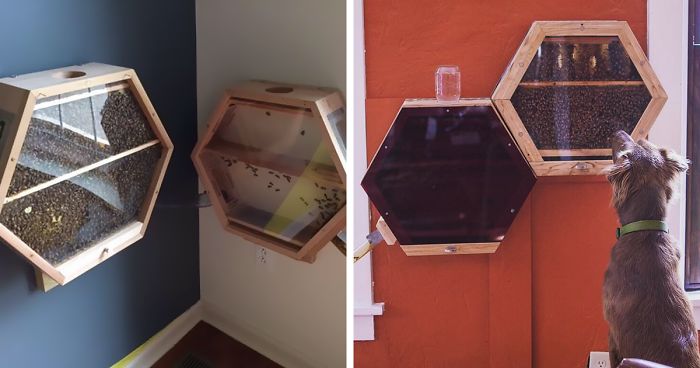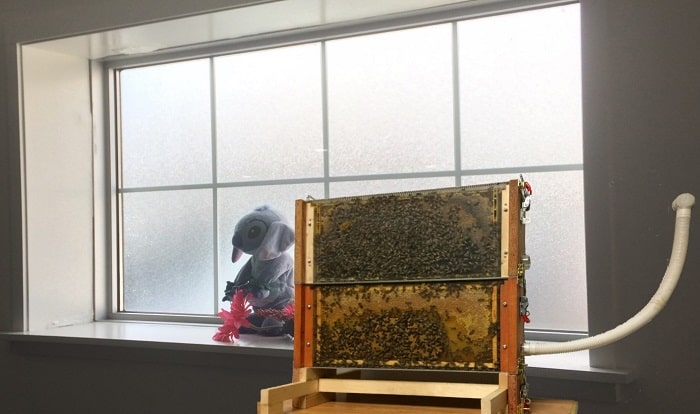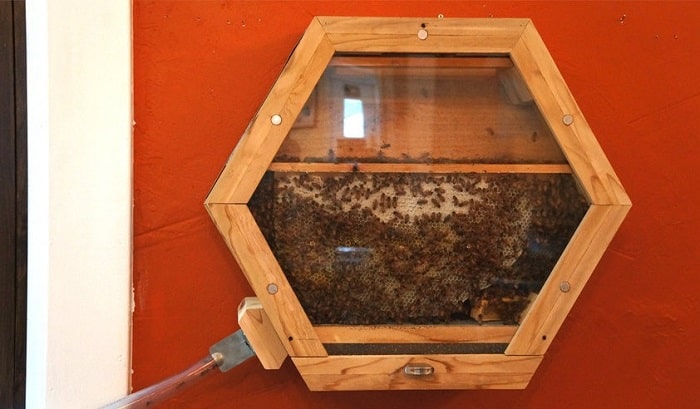Indoor beekeeping is not only a fascinating hobby, but it is also one of the most gratifying. If you’ve been thinking about getting into apiculture (beekeeping), this is one of the options. However, before you begin, you must first grasp the individual laws and regulations that apply to your state. So, what exactly is indoor beekeeping?
Why should you keep bees indoors?
Beekeeping has existed since the dawn of time. The majority of professional beekeepers began as hobbyists or part-time beekeepers before becoming professionals. A beekeeper does not require a lot of area. Indoor beekeeping is possible in your home (as the name implies).
Modern technology has resulted in the development of some sophisticated in-house hives. It not only compliments your interior decor but also provides a place for bees to grow and generate sweet honey and other honeybee goods. Indoor beehives appear for safety purposes. The most important thing is to provide a healthy and comfortable environment for bees.

Important considerations for Indoor Beekeeping
- Recognize legal requirements
The law and regulations may differ from state to state, which is why it is critical that you become familiar with the laws in your area before becoming a beekeeper. The main rule is to keep the bees in a healthy environment and to keep them from becoming a nuisance to humans who live nearby.
It is also critical to recognize that abandoning your hive when you lose interest in beekeeping is neither morally nor legally correct. Neglected hives are generally a source of infection for neighboring colonies. They may also swarm and attack people and cattle in the surrounding area.
- Neighbours
Before you begin beekeeping, it is a good idea to inform your neighbors that you will be a beekeeper. This is not needed by law, and you are not compelled to divulge it. However, inform them so that they can protect themselves as well as your bee colony.
When you uncover the nest for examination, honey bees will become aggressive. As a result, check once a week when there are no neighbors close. When doing this, keep pets and children away from the area. When doing this, you should also wear the appropriate protective gear.
- Select a strain of bees that is calm.
Not all bees are the same. Replace aggressive colonies with a gentle strain to make indoor beekeeping easier. Nonetheless, before a colony is replaced, a number of variables must be examined. For example, the manner in which the combs are handled, the type of clothing used, the manner in which the hive is handled, and the period in which it is handled.
How did you get the bees?
There are two fundamental methods for obtaining bees for your indoor hive:
- Nucleus Colony
This is the most common approach, in which you buy a tiny bee colony. This can be obtained from a reputable bee equipment supplier or from those that breed bees for sale. The months of September and October are ideal for obtaining a nucleus. The nucleus colony includes a queen, honey, three to four combs, a brood, and worker bees.
- Bee swarms
You can get honey bees from tree branches or any convenient location where they have settled. The bees are gathered and moved to your new hive. To be successful, certain qualifications and experience are required.

>>> View more: How To Start Beekeeping Beginners – Everything You Should Know
The Beecosystem
This is a novel method for keeping bees indoors in cities. The entire system is a cedar hexagonal hive. The beecosystem has a transfer tube that transports the bees to the outside world. These are outfitted with movable windows to allow for greater mobility. All you have to do is hang the system on the wall. Other features include a cleaning drawer for dirt collection, a top feeder for feeding when resources are limited, and a wall bracket for connection.
While the Beecosystem is a well-known indoor beekeeping system, it is not the only one. Other indoor observation hives, such as the Toughtimbers Observation Hive, are more easily accessible and allow you to set it up yourself.
Honey bee behavior
The bee colony is a sophisticated and self-sustaining mechanism. Because of their exceptional sense of coordination and organization, bees can survive and thrive even in the wild. Understanding colony behavior is important because it allows the beekeeper to properly manage the bees. Bees’ sensory organs enable them to respond to a variety of stimuli such as light, chemicals, and physical movement. Communication serves a variety of functions in bees, including:
- Safety of the colony: It is a method of alerting the colony to any dangers around them.
- Food sources: Bees can communicate with one another about different food sources. This is essential for the bee colony’s survival.
- Procreation: It is impossible to achieve mating if there is no method to communicate. The bees can communicate with one another when it is time to mate, which aids in the development of the next generation.
- Honey comb construction: During the creation of honey combs, communication is essential. Because worker bees can communicate with one another, they can carry out their jobs.
What about Swarming?
When it comes to swarming, each indoor beekeeper should be well-versed in this natural bee phenomena. It mostly occurs as a means for the bee colony to grow their numbers and proliferate the next generation. As the population grows, the bees produce more queens in preparation for swarming. They will then split off and leave. Swarming occurs during flowering seasons and results in a financial loss for the beekeeper.
Despite the fact that swarming occurs naturally in bees, it is possible to spot indicators of it and prevent it from happening. You should take corrective action if you see some of the indicators of swarming. Control swarming by doing the following:
- Divide the colony to make additional space in the hive.
- To prevent the appearance of new queens, you can destroy the swarm cells.
- Switching weak colonies for stronger colonies in order to enhance the weaker colonies.
- Clipping queen wings is another temporary solution.
Absconding and migration are two more prevalent beehive problems. Because of genetic variables, seasonal changes, and a lack of nectar and pollen, bees will move. Absconding, on the other hand, occurs when pests, illnesses, or predators are present. Weather, chemicals, fire, and poor management are all factors that contribute to absconding.

>>> Read now: Best Beekeeping Gloves – Top 5 Products You Shouldn’t Ignore!
Wintering indoor bees
Winter is a difficult season for bees, whether they dwell outside or inside. It is your obligation as an indoor beekeeper to keep the bees in a healthy environment. Indoor beekeeping throughout the winter requires the following:
- Temperature control
It should be around 5°C, or slightly higher or lower by 1°C. Anything over or below this may result in the honey reserves being consumed by bees.
- Ventilation
Within the indoor hive, proper ventilation should be provided. This will aid in the removal of surplus heat, carbon dioxide, and heat produced when numerous colonies are wintered indoors.
- Avoid any disturbances
Indoor beehives should have as little light as possible. Besides that there is no noise and vibration. You should minimize or avoid lights if possible for the best for bees. All of these will contribute to creating a conducive atmosphere for indoor bees.
Conclusion
The introduction of the beecosystem, in particular, is a total game changer. Even in urban areas, bee lovers can keep bees. However, before you start raising bees, be sure you understand the state restrictions.
>>> Don’t forget to read: Top 5 Best Beekeeping Books For Beginners
